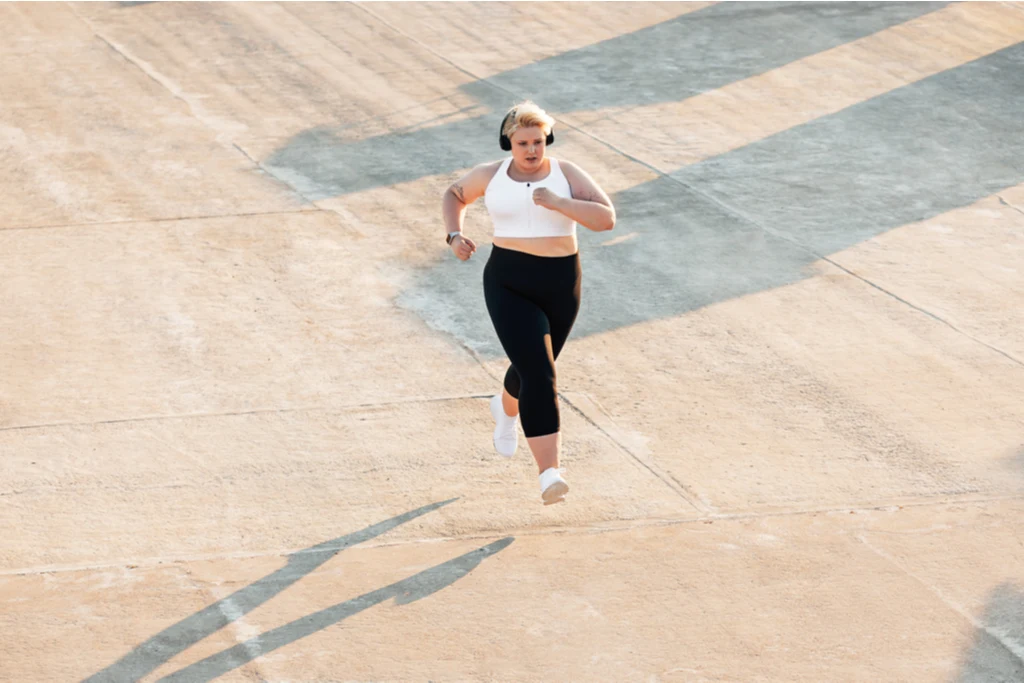The Best & Worst Exercise For PCOS

June 29, 2022 - Updated August 28, 2025

If you’re living with PCOS, you’ve probably been told a million different things about what you should or shouldn’t do when it comes to exercise. And let’s be real, it can feel overwhelming and confusing trying to listen to the experts and listen to your body at the same time to figure out what actually helps.
Moving your body can play a big role in managing symptoms like irregular cycles, fatigue, and weight fluctuations, and it doesn’t need to involve endless cardio or super intense workouts that leave you depleted.
In this article, we’ll break down how exercise can support your health with PCOS, which types of movement might be especially beneficial, and how to approach fitness in a way that feels sustainable (and enjoyable) for you.
What is PCOS?
According to a 2020 systematic review, polycystic ovary syndrome affects between 8-13% of reproductive-aged women, making it one of the most common endocrine conditions. If you don’t have it yourself, chances are you know someone who does!
Women with PCOS have multiple cysts on their ovaries, which can be picked up with a scan, and the condition is characterised by a hormonal imbalance and excess androgens - a group of hormones including testosterone.
Insulin resistance can also be an issue, which affects how your body uses blood sugar for energy. This means PCOS can have an impact on your reproductive system and your metabolic system.
Apart from ovarian cysts, common symptoms may include:
An irregular menstrual cycle
Heavy periods
Infertility issues
Weight gain
Acne
Thinning hair on your head
Excess hair on the face or body
Without proper management, PCOS can also put you at higher risk of other health conditions such as cardiovascular disease, liver issues and diabetes.
As anyone who has PCOS can attest, living with this condition can be a real struggle, physically and emotionally, but the good news is there are some healthy lifestyle changes you can make to improve it - one of which is exercise.

Benefits of exercise for PCOS
As a 2020 systematic review has highlighted, for women with PCOS, regular exercise consistently leads to improved clinical outcomes, and evidence suggests lifestyle modifications should be the first line of treatment for those with PCOS.
Research shows that exercise can offer a wide range of benefits for PCOS, including:
Improved cycle regularity and hormone health
Reduced risk of long-term health issues such as cardiovascular disease and diabetes
Improved insulin resistance
Improved or restored reproductive function
Improved mental wellbeing (anyone with PCOS will know what a toll it can take on your headspace)
Improved weight management (as weight gain or difficulty losing weight are common challenges and increase your risk of other health issues).
How often should you exercise with PCOS?
There’s no magic number of minutes or workouts per week, but the most important thing is consistency and daily movement. Guidelines suggest at least 150 minutes of exercise each week.
If you think this sounds like a hard ask, remember that not every minute of this needs to be intense, and 150 minutes per week averages out to only 20 minutes per day. Some days you might do home workouts or head to the gym, while other days could be brisk walking, jogging or a yoga flow in your lounge.

What are the best (and worst) types of exercise for PCOS?
Although we always recommend finding and sticking to training styles you enjoy, with PCOS, it’s important to make sure you’re including a mix of cardio and strength training, as they offer unique benefits.
Best types of exercise
Try and include a mix of cardio and strength training in your routine each week.
Cardio helps to regulate your hormones, improve insulin sensitivity and weight management, and reduce your risk of long-term health issues. Whether that’s low-intensity steady state cardio (a daily step goal can be a big help) or HIIT is up to you!
HIIT has been shown to have a significant impact on cardio fitness, body composition and insulin resistance, with research indicating 120 minutes per week can be beneficial. According to 2015 research, 10 weeks of high-intensity interval training improved insulin resistance for women with PCOS, and body composition improved significantly with a combination of HIIT and strength training. For some people, however, HIIT can be draining (especially if your stress levels are already high) and worsen your symptoms if you overdo it, so listen to your body and what makes you feel better rather than worse.
Strength training helps to build muscle and strength, supporting healthier body composition, hormonal and metabolic health. It's one of the most popular training styles in the Sweat app and there are plenty of programs to choose from!
Worst types of exercise:
The worst thing you can do in terms of exercise is not exercise, so if you’re moving your body every day, you’re already winning.
The next thing you want to avoid is overtraining and throwing your hormones out with excess stress and cortisol. Exercise is incredibly beneficial for women with PCOS, but more is not always more.
If HIIT or any vigorous cardio training is part of your routine and it makes you feel good, amazing, but it shouldn’t be something you do every day (for your hormones, your overall recovery and the sustainability of your routine). Balance it out with lower intensity steady-state cardio and weight training.
What if you have PCOS but you’re a fitness beginner?
If you don’t have a regular exercise routine, don’t worry! Going from zero to 100 is something none of our trainers would recommend as it can set you up for burnout and increase your risk of injury, so take things slowly if you’re new or returning to exercise.
Start your fitness journey by incorporating daily cardio like brisk walking, jogging or cycling, try bodyweight workouts to reap the benefits of strength training, and then think about progressing to HIIT workouts and adding weights.
When you join Sweat, you can also select your fitness level and goals in the app and there are plenty of beginner workouts available. You’ve got this!

Erin is a writer and editor at Sweat with years of experience in women's publishing, the fitness industry, media and tech. She's passionate about the power of movement, and you can often find her on a yoga mat, a hike, a dance floor, in the ocean or the gym.
* Disclaimer: This blog post is not intended to replace the advice of a medical professional. The above information should not be used to diagnose, treat, or prevent any disease or medical condition. Please consult your doctor before making any changes to your diet, sleep methods, daily activity, or fitness routine. Sweat assumes no responsibility for any personal injury or damage sustained by any recommendations, opinions, or advice given in this article.
Fitness